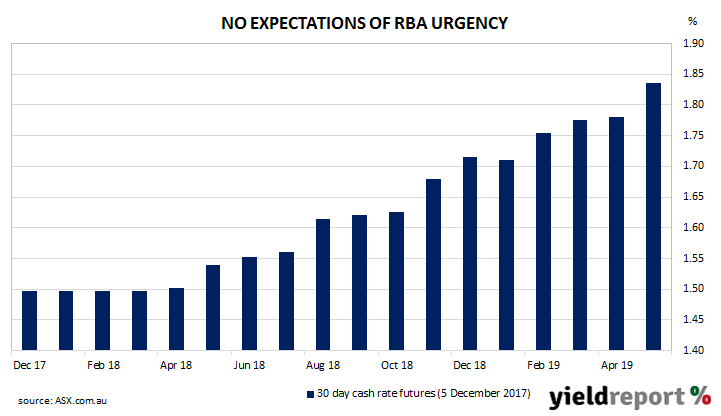The December meeting of the RBA Board is not one of the four months of the year traditionally associated with RBA rate changes. November, along with February, May and August are statistically much more likely to be the months in which the RBA changes its official rate. The thinking is these are the months following quarterly releases of CPI figures and the RBA uses the data to confirm its forecasts of the likely trajectory of inflation.
No economists or commentators expected a rate change to come out of this meeting. Prices of contracts in the cash futures market implied a near-zero chance of a change at this meeting and for several months in 2018. Prices were largely unchanged after the decision was announced.

As expected the RBA held the official rate steady at 1.50%. The press release which accompanied the decision has some amended sections but the essence of the message is largely unchanged from that of the November meeting. On the plus side, the global conditions “have improved over 2017” and the RBA’s forecasts for Australian GDP growth “to average around 3% over the next few years”. The labour market has been strong over 2017 and “various forward indicators continue to point to solid growth”. Finally, underlying inflation “remains low”. On the minus side, household incomes are growing slowly and debt levels are high.
Westpac chief economist Bill Evans said “the most interesting change” in Governor Philip Lowe’s statement was the reference to the Australian dollar. The exchange rate of the Aussie no longer appears to be an issue for the RBA. He also noted the RBA’s recent tendency to note reports of employers’ difficulties in finding workers “with the necessary skills.” He thinks this has not yet become a pressing issue for the RBA because Lowe stated “wage growth remains low and is likely to continue for a while yet”.

